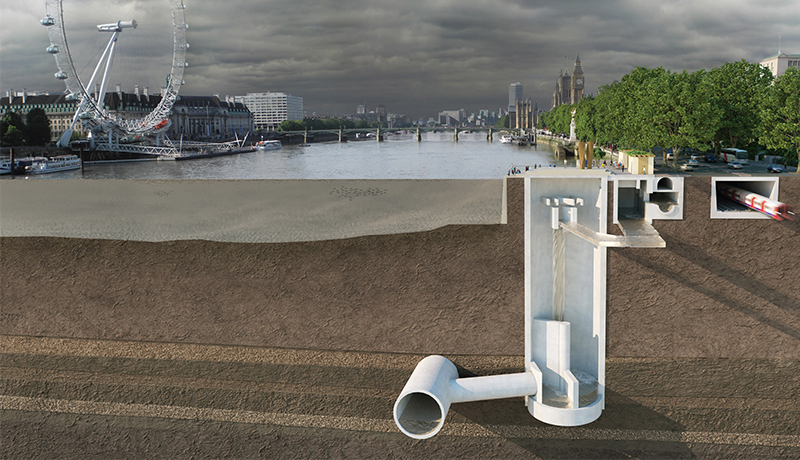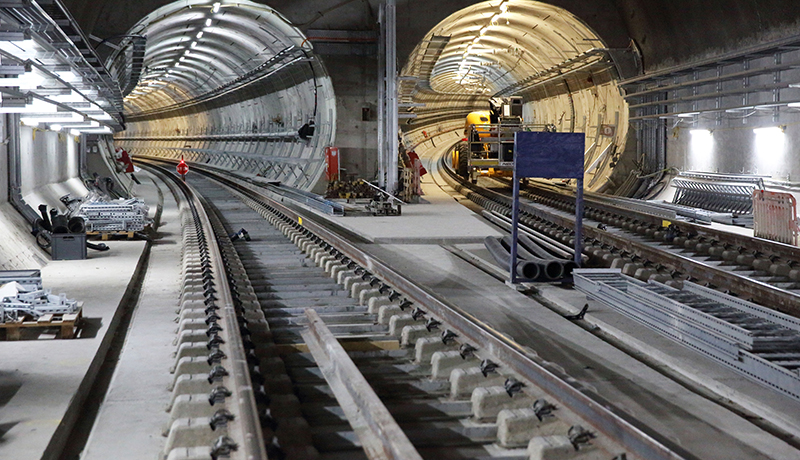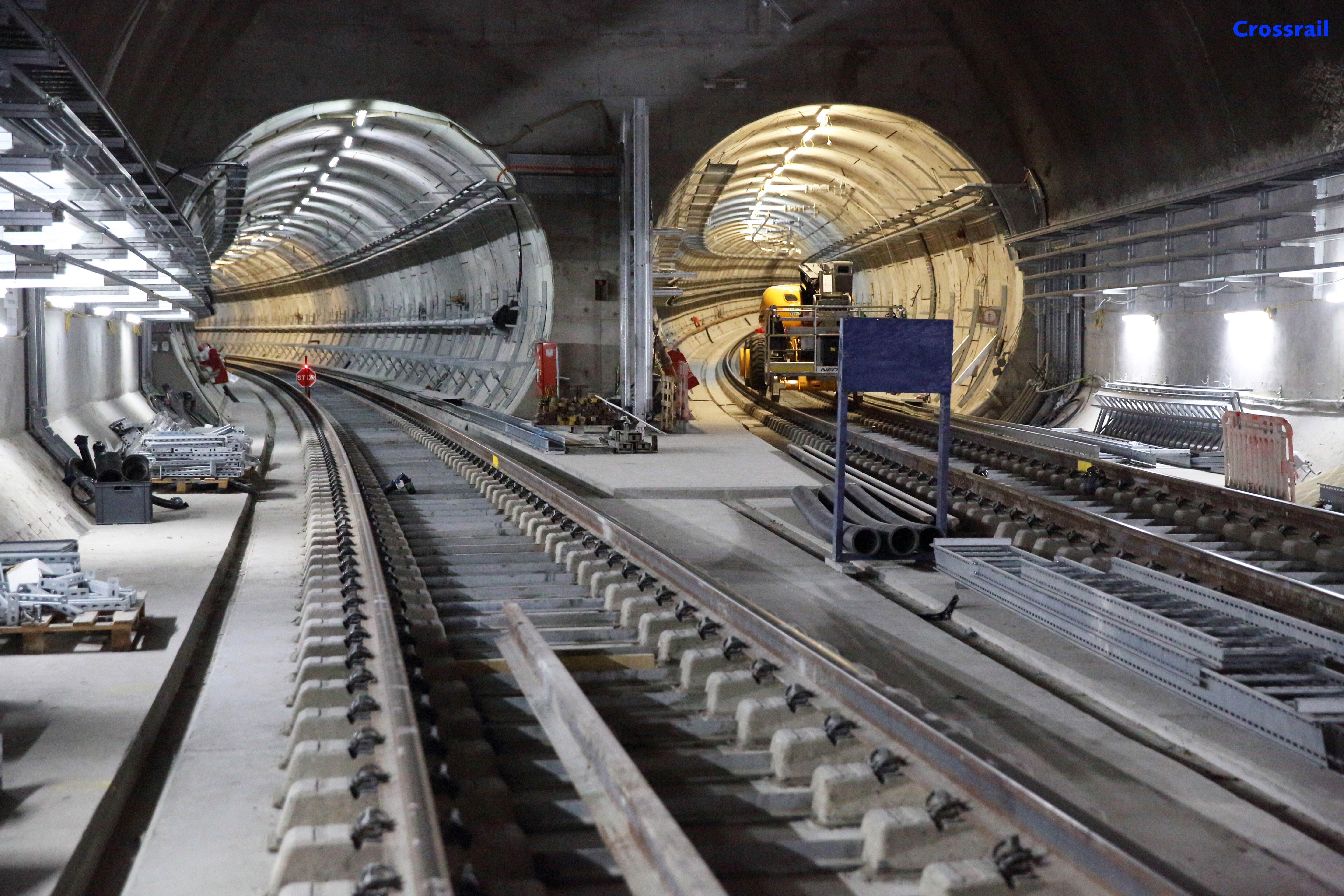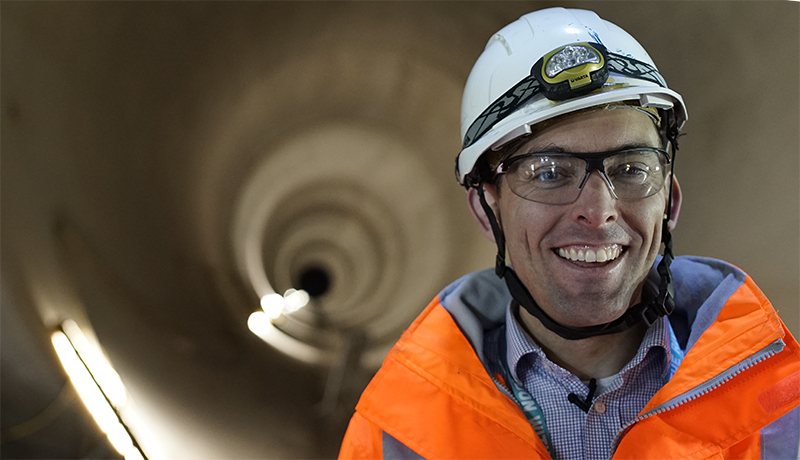The United Kingdom has a long and illustrious history of groundbreaking engineering projects – from Brunel’s Clifton Suspension Bridge to London’s Tower Bridge, to the Ouse Valley Viaduct – and there are breathtaking, modern-day projects that demonstrate just how this legacy continues today. From super sewers to vast rail routes, here are seven important projects that prove the tradition of innovation and engineering excellence is very much alive and kicking.
1. Thames Tideway Tunnel
A feat in subterranean engineering, the Thames Tideway Tunnel is a modern upgrade to London’s outdated Victorian drainage system, now overstretched and ineffective in the face of a growing population. The £4.7 billion “super sewer”, currently under construction, will run from Acton to Tower Hamlets – capturing, storing and removing the capital’s raw sewage and preventing the millions of tonnes of overflow that currently contaminate the River Thames each year. The 16-mile long, 7.2-metre wide tunnel is the deepest ever constructed in London, and the first ever attempted along the route of the river. An immense project, it will take almost a decade to complete, with thousands of construction workers based on dozens of sites throughout the city.
Learn more about this project in The Five Billion Pound Super Sewer
 A CGI cross-section of the new Thames Tideway Tunnel
A CGI cross-section of the new Thames Tideway Tunnel
2. HS2
High Speed 2, or HS2 as it’s known, is a planned high-speed rail link between London and Birmingham that, in its second stage, will see the line extended north to Leeds and Manchester. The significant rail development will involve over 500 kilometres of track and create some 40,000 jobs. When finished, trains will travel at an estimated 250 miles per hour, with the fastest journey from London to Manchester cut from two hours to just over one. But don’t expect the high-speed travel anytime soon: the megaproject has a planned completion date of 2032.
3. Crossrail
Europe’s largest infrastructure project, Crossrail (which is due to open in 2020), will provide an east-west link across London, transform the way commuters travel in and out of the city and the South East and increase rail capacity in the capital by around 10%. The new 200-metre-long trains (the length of two football pitches!) will allow space for 1,500 passengers. With over 100 kilometres of new train lines and ten new stations, the project – which got underway in 2009 – will cost close to £15 billion. Much of the track will be above ground, but in a phenomenal feat of engineering, eight 1,000 tonne machines have carved out 26 miles of 6.2 metre-wide railway tunnels underneath the metropolis.
Find out more about Crossrail and download a free poster
 The subterranean tunnels of the Elizabeth line (Crossrail) are scheduled to be fully open in December 2019
The subterranean tunnels of the Elizabeth line (Crossrail) are scheduled to be fully open in December 2019
4. Leeds Flood Alleviation scheme
In December 2015, in the wake of Storm Eva, the River Aire burst its banks and water surged through the city of Leeds. To reduce the future flood risk, a £50 million state-of-the-art flood defence system has been implemented, with a second phase addressing at-risk areas beyond the boundaries of the city. The groundbreaking technology incorporates concrete walls and glazed panels along the river in Leeds city centre, and innovative moveable weirs that can be lowered when the risk of flooding is high – reducing water levels and relieving the flood threat.
5. Cambridge to Huntingdon Improvement Scheme
The A14 Cambridge to Huntingdon Improvement Scheme constitutes one of the UK’s most significant road projects. The upgrade to the A14 between Ellington, west of Huntingdon, and Cambridge involves the construction of a major new bypass as well as widening significant stretches of existing highway. The project, which aims to relieve congestion and improve the transport link between East Anglia and the rest of the country, represents a significant investment from the government (to the tune £1.5 billion) and will take four whole years to complete.
6. The Queensferry Crossing
The Queensferry Crossing, which links Edinburgh and the north of Scotland over the River Forth, is the longest three-tower cable-stayed bridge in the world – and the largest Scottish infrastructure project in a generation. The bridge spans 2.7 kilometres and reaches 210 metres above the water – that’s the height of roughly 48 London buses stacked on top of each other. The superstructure required 35,000 tonnes of steel and around 150,000 tonnes of concrete, with construction involving the largest ever continuous underwater concrete pour: a 15-day affair which saw 16,869 cubic metres of the stuff dumped into the bridge’s foundations. Incredibly, the six-year, £1.4 billion project came in under budget!
 The Queensferry Crossing carries the M90 motorway between Edinburgh and Fife
The Queensferry Crossing carries the M90 motorway between Edinburgh and Fife
7. The Falkirk Wheel
The Falkirk wheel, which had its grand opening in 2002, is no longer new – but as the only rotating boat lift of its kind in the world, it deserves a special mention. The Edinburgh and Union Canal is 25 metres above that of the Forth and Clyde Canal when they meet near Falkirk. And that’s where this sterling example of engineering prowess comes into play. Two giant rotating arms raise boats by a height of 24 metres to move them between the two waterways: an incredible alternative to navigating the eleven locks that previous journeys entailed.


Rate and Review
Rate this article
Review this article
Log into OpenLearn to leave reviews and join in the conversation.
Article reviews